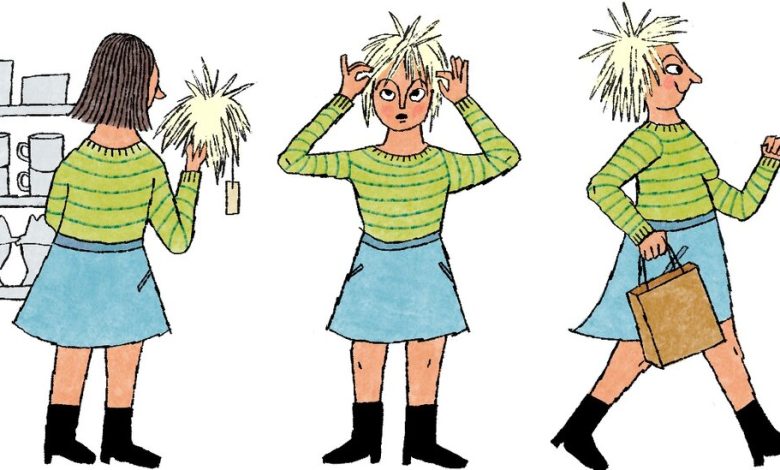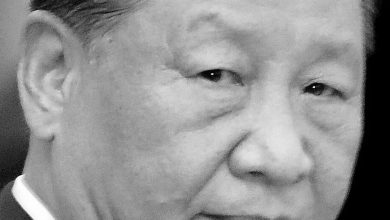Being Edward Hopper

The Musée Picasso in Paris, home to a vast trove of its namesake’s masterworks, is offering a striped Breton shirt that makes it easy to adopt the great Cubist’s signature look for a mere $70 or so.
On a web page for the Smithsonian’s Hirshhorn Museum, in Washington, you can buy high-top sneakers covered in the “infinity net” pattern that is an artistic trademark of Yayoi Kusama, the 93-year-old Japanese art star. They cost $360.
The gift shop at the Whitney Museum of American Art displays a $118 Hopper hat, a felt fedora that’s an almost perfect match for the one in Edward Hopper’s most famous self-portrait, which the museum owns.
If visitors are willing to spend that kind of money to dress up like a favorite artist, that’s because today’s art-loving public finds as much inspiration in creators’ personas as in the works they create.
Jennifer Heslin, director of retail operations at the Whitney, said that over her quarter-century in museum marketing, she’s seen visitors become ever more interested in goods, like the museum’s Hopper hat, that give them “a connection to that creative impulse” in the great artists who act as role models.
One of the world’s many immersive “experiences” dedicated to Vincent van Gogh sets itself apart from all others with a virtual-reality component that gives the chance to be “fully immersed in the mind” of van Gogh. An immersive built around Frida Kahlo can proudly proclaim that it is “presented without reproductions of the artist’s paintings” so that it can dwell instead on “the incredible story behind the legendary artist.” It’s been popular enough to get programmed in 15 cities worldwide.
Six decades ago, Andy Warhol helped set us on this course, for good or ill, when he first made his persona count for as much as his paintings or films. The creation that truly changed the whole future of art was the living sculpture called Andy Warhol, forever updated to suit the times it was in.
There was his striped shirt borrowed from Picasso, used to create a cheerful, Pop-y version of Warhol that signaled his ambition to take the Spaniard’s place in art. Then there was the vampiric Warhol, in a biker’s leather jacket and drug-user’s shades. The ’70s saw Warhol in jeans, white shirt and tie, casting off his outdated ’60s rebellion, and then in the ’80s he could be seen in shoulder pads to court the New Wave. And throughout it all that shocking platinum wig, now for sale in any costume store.
An early critic billed Warhol as the culmination of “that curious yet significant tradition in which the artist is his own work of art” — a tradition that was peaking just when Warhol came on the scene. In the early 1960s, the cutting-edge did its best to dissolve all frontiers between art and life, declaring salad-making an artistic act, or wheeling a baby carriage, or in one sad case, overdosing on drugs.
Warhol conjoined art and life better than almost anyone, and that is what continues to keep him so much in the public eye. Four decades after his death, this winter he’s onstage alongside Jean-Michel Basquiat, that other larger-than-art persona, in a Broadway play and is at the heart of two other plays in Chicago, after his star turn last year in “The Andy Warhol Diaries” on Netflix. All those shows let Warhol’s artistic creations almost disappear behind the man who created them. He led us to Hopper hats and art-free Kahlo events.
Warhol clearly wasn’t the first artist to have a persona that attracted attention. The public’s interest in van Gogh was always split between his works and his life story, however little he had planned on that outcome. A host of great women artists took care to craft personas that helped them stand out from a horde of male colleagues. A few years back, a Brooklyn Museum show about Georgia O’Keeffe highlighted the signature outfits she sewed and bought and had herself photographed in. A show at the Philadelphia Museum of Art displayed all the many great photos that spread news of Frida Kahlo’s own colorful, well-tended persona. But where the splashy images of those artists helped to pitch works that stood up fine on their own, Warhol’s endless Marilyns and Flowers and Soup Cans have come to seem more like mere pointers to their creator.
The fame of Kusama, which only seems to grow by the year, is likewise less about any actual aesthetic rewards delivered by her unending stream of dot-covered objects than about the self-declared madness that gave birth to those dots.
Kusama’s dots say “Yayoi was here” as much as they ask for the deepest of readings. Their constant repetition doesn’t work to dilute some powerful artistic message, as you could argue is the case with notable repeaters like Gerhard Richter or Richard Serra. Kusama’s repetitions, like Warhol’s, work wonders in getting her persona known far and wide. Right now, she — or at least her magnetic persona — is attracting crowds outside the Fifth Avenue window of




